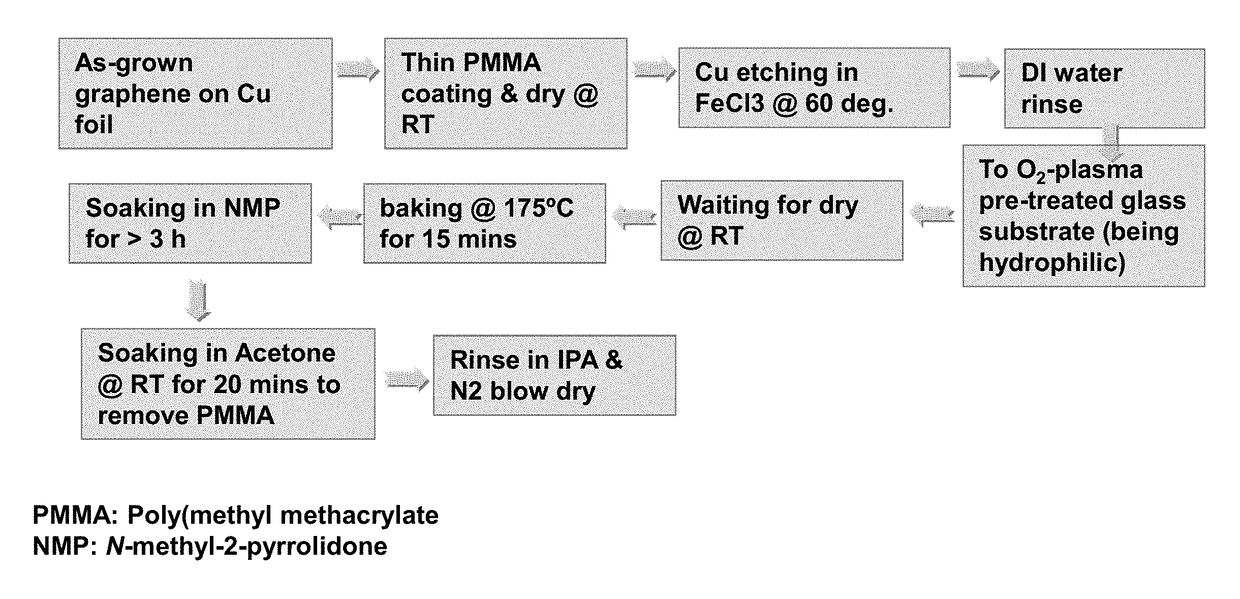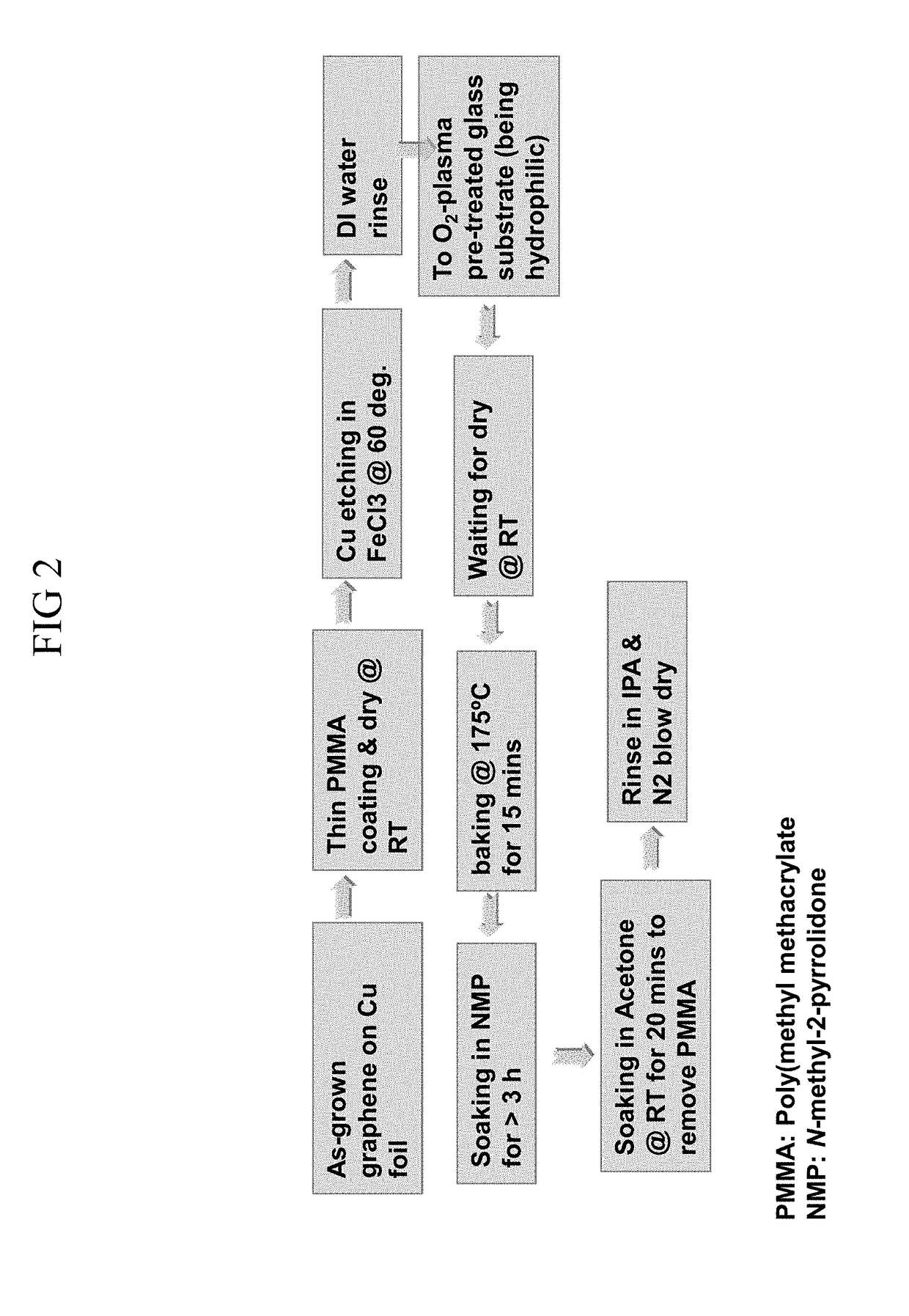Transfer of monolayer graphene onto flexible glass substrates
a technology of flexible glass substrates and monolayer graphene, which is applied in the direction of coatings, inorganic chemistry, chemistry apparatus and processes, etc., can solve the problem of unmet needs for improving processes
- Summary
- Abstract
- Description
- Claims
- Application Information
AI Technical Summary
Benefits of technology
Problems solved by technology
Method used
Image
Examples
example 1
of Monolayer Graphene onto Willow® Glass Using the TRT Method
[0047]Willow® glass samples 25.4×25.4 mm×150 μm thick are used for the transfer. A CVD-grown monolayer of graphene on copper is obtained from Graphenea, Spain and is used as received. The Willow® samples are cleaned according to the surface cleaning procedure described above. The graphene transfer is carried in a clean room using the TRT-method described above. The transferred films are characterized by Raman spectroscopy, UV-vis spectrophotometry and four point probe measurements to, respectively, determine the continuity and quality, optical transmittance, and sheet resistance of the films. The results show that the transferred graphene is a continuous monolayer film with low defect density and good transmittance (see FIGS. 3-5). The properties of the transferred film are presented in Table 1.
[0048]
TABLE 1Disorder / defectSheetVisibleFilmlevel, *ID / IGresistanceTransmittanceSample IDSample DescriptionCoverage(avg.)KΩ / sq(%)W...
example 2
of Monolayer Graphene onto Willow® Glass by PMMA Method
[0049]In Example 2, the glass substrate, the graphene source and the glass pre-cleaning procedure are the same as in Example 1. However, the graphene films are transferred onto the Willow® samples via the PMMA method described above. The transferred films are characterized in the same manner as in Example 1. The properties of the transferred graphene are largely the same as in Example 1 (see Table 1).
example 3
of Monolayer Graphene onto Phyllo® Glass Using the TRT Method
[0050]In Example 3, Phyllo® glass samples 25.4 mm×25.4 mm×25 μm thick are used for the transfer. The graphene on copper samples are obtained from the Institute of Photonic Sciences (ICFO), Spain. The glass pre-cleaning and transfer procedure as well as characterization of the transferred films are the same as in Example 1. The graphene film coverage and the measured transmittance are about 80% and 89%, respectively (Table 1).
PUM
| Property | Measurement | Unit |
|---|---|---|
| thickness | aaaaa | aaaaa |
| temperature | aaaaa | aaaaa |
| temperature | aaaaa | aaaaa |
Abstract
Description
Claims
Application Information
 Login to View More
Login to View More - R&D
- Intellectual Property
- Life Sciences
- Materials
- Tech Scout
- Unparalleled Data Quality
- Higher Quality Content
- 60% Fewer Hallucinations
Browse by: Latest US Patents, China's latest patents, Technical Efficacy Thesaurus, Application Domain, Technology Topic, Popular Technical Reports.
© 2025 PatSnap. All rights reserved.Legal|Privacy policy|Modern Slavery Act Transparency Statement|Sitemap|About US| Contact US: help@patsnap.com



